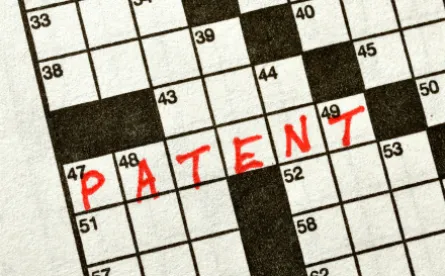In its Decision, the Patent Trial and Appeal Board is instituting covered business method patent review of certain claims of the ’245 patent based on the following grounds: claims 1-16 as directed to non-statutory subject matter under 35 U.S.C. § 101; claim 12 as indefinite under 35 U.S.C. § 112, second paragraph; claims 1-4 and 6-16 as having been obvious over Murray under 35 U.S.C. § 103(a); claim 5 as having been obvious over the combination of Murray and Con Edison under 35 U.S.C. § 103(a); and claims 1, 2, 5-9, 13, and 14 as having been obvious over the combination of Brewster and Con Edison under 35 U.S.C. § 103(a). The Board denied all other grounds raised in the Petition.
The ’245 patent relates to generating “an energy resource” that may be “exchanged by energy consumers for items of value, including currency, credit, or other goods and services.” The energy resource may be generated by monitoring consumer energy consumption and providing feedback to consumers. The Board construed the claim term “energy resource” as including “one or more of energy generation or energy reduction, where an energy reduction may include energy conservation, efficiency, or energy use shifting, and may be a reduction as compared to normal energy use.”
The Board concluded that Petitioner had shown standing to file the Petition to challenge the ’245 Patent as a covered business method patent. In this regard, the Board found that Petitioner had satisfied the “charged with infringement” requirement of 37 C.F.R. § 42.302(a) in view of claim charts and other correspondence provided by Patent Owner to Petitioner; that at least one claim of the ’245 Patent is directed to the practice, administration, or management of a financial product or service under AIA § 18(d)(1) because the claim term “energy resource” relates to a “valuable resource” that may be exchanged for a financial product; and that the claims do not recite a technical feature that is novel and unobvious over the prior art and/or that solves a technical problem using a technical solution.
The Board provided a number of reasons in support of its conclusion that Petitioner had demonstrated that it is more likely than not that claims 1-16 are unpatentable under 35 U.S.C. § 101 as being directed to non-statutory subject matter. For example, the Board concluded that because an energy resource can be an abstract quantity, creating an “energy resource” is an abstract concept. The Board went on to conclude that each of the challenged claims “is broad enough to read on provoking consumers not to act by keeping their appliances unplugged to generate an energy resource,” with such inaction illustrating “that the generation of an energy resource is an abstract idea.” Furthermore, the Board preliminarily indicated that “the challenged claims alternatively may be viewed as directed to a law of nature.” The Board also determined that the conventional computer hardware recited in the claims “does not transform the abstract idea of conserving energy (by not using it), as set forth in claims 1-16, into a patent-eligible application of the idea.”
The Board disagreed with Petitioner’s indefiniteness challenge to claims 1-11 and 13-16 under 35 U.S.C. § 112, second paragraph. With respect to these claims, the Board found that Petitioner had not shown how breadth of the claim language, without more, could render any claim indefinite; that independent claim 1, “as a system claim, does not require, as a necessary step, [certain] intended uses actually to occur;” that certain accused terms in claim 1 were not lacking in antecedent basis; and that independent method claim 13 was not indefinite. Nonetheless, the Board did find that method claim 12 was indefinite because it depended from system claim 1 (i.e., it is not clear whether claim 12 is directed to a method claim or a system claim).
Finally, with respect to 35 U.S.C. § 103(a), the Board concluded that Petitioner had established that it is more likely than not that Petitioner would prevail on its challenge that Murry would have rendered obvious claims 1-4 and 6-16; on its challenge that the combination of Murray and Con Edison would have rendered obvious claim 5; and on its challenge that the combination of Brewster and Con Edison would have rendered obvious claims 1, 2, 5–9, 13, and 14.
Opower Inc. v. Cleantech Business Solutions, CBM2014-00155
Paper 10: Decision on Institution of Covered Business Method Patent Review
Patent: 8,489,245 B2
Dated: January 12, 2015
Before: Karl D. Easthom, Trevor M. Jefferson, and J. John Lee
Written by: Easthom



 />i
/>i
